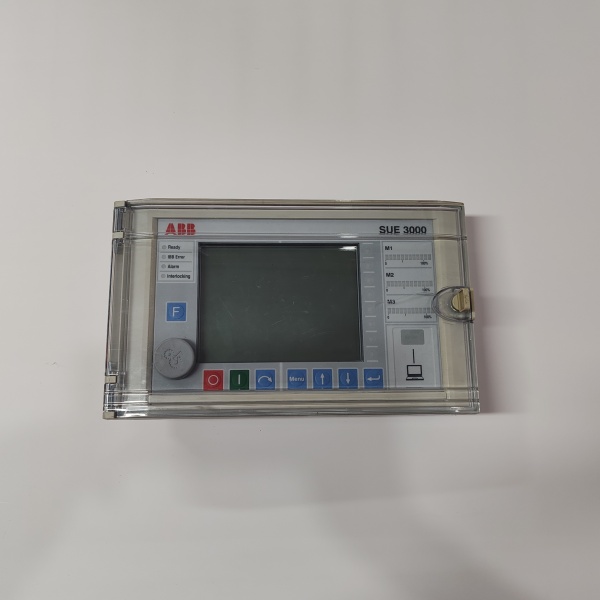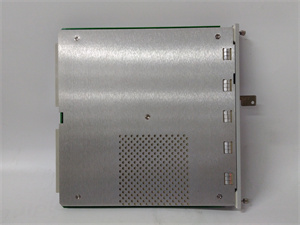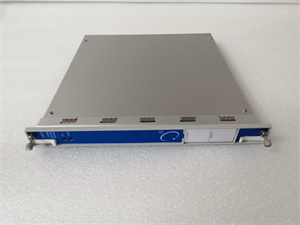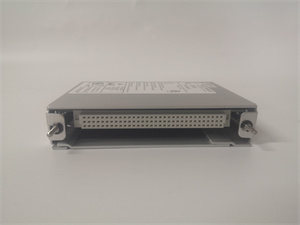Description
Key Technical Specifications
- Model Number: SUE3000 (P/N: 1VCR007346 G0032)
- Manufacturer: ABB
- Rated Voltage: 6.6kV AC (50/60Hz), max operating voltage 7.2kV
- Current Ratings: 3000A continuous, 4500A peak (10s starting current)
- Motor Power Range: 1.5-10MW (at 6.6kV)
- Starting Method: Thyristor-based voltage ramp, configurable start/stop time (1-30s)
- Control Functions: Current limiting, overload protection (class 10/20), underload protection, phase imbalance detection
- Operating Temperature: -10°C to 55°C (14°F to 131°F), derate 2%/°C above 45°C
- Cooling System: Forced air (standard), liquid cooling (optional for high-ambient applications)
- Isolation Level: 28kV AC (1min power frequency withstand), 75kV peak (lightning impulse)
- Protection Rating: IP21 (chassis), IP54 (with enclosed cabinet)
- Control Input/Output: 4-20mA DC, Profinet/Modbus TCP, relay outputs (6NO+6NC)
- Certifications: IEC 60947-4-2, UL 1004-1, CE, ATEX Zone 2, IECEx
ABB SUE3000 1VCR007346 G0032
Field Application & Problem Solved
In heavy industries—mining, cement, steel, and power generation—the biggest threat to large medium-voltage motors (1MW+) is the destructive inrush current during direct-on-line (DOL) starting. DOL starting dumps 6-8x the motor’s rated current into the windings, causing mechanical shock to couplings and gearboxes, and voltage sags that disrupt other plant equipment. I saw this at a Wyoming coal mine in 2021: a 3MW crusher motor started DOL, triggering a 30% voltage sag that tripped two conveyor belts and damaged the motor’s bearing within 6 months ($120k repair). The SUE3000 solves this by ramping voltage from 0 to full rated value, limiting inrush current to 2-3x rated, and eliminating mechanical/electrical shock.
You’ll find this soft starter in three critical scenarios: starting 2-5MW crusher motors in mining operations (where smooth ramp-up prevents gear tooth damage), controlling 1.5-3MW fan motors in cement plants (where current limiting avoids grid voltage sags), and starting 3-10MW pump motors in power plant auxiliary systems (where controlled stopping prevents water hammer). At a Pennsylvania steel mill retrofit in 2023, we replaced 4 DOL starters with SUE3000 units—cutting motor bearing replacements by 80%, eliminating voltage sag-related trips, and extending motor lifespan by an estimated 5 years.
Its core value is protection without sacrificing performance. Unlike bypass contactor-only solutions, the SUE3000 provides precise current control throughout the start/stop cycle, adapting to variable load conditions (e.g., a crusher jammed with rock). The 4500A peak current capacity handles heavy-start loads, while built-in overload protection prevents motor damage during extended starts. For plants running 24/7, this means fewer unplanned shutdowns, lower maintenance costs, and reduced wear on expensive motor and mechanical equipment.
Installation & Maintenance Pitfalls (Expert Tips)
Misconfiguring Ramp Time for Load Type:
Rookies set generic 10s ramp times regardless of the motor’s load, leading to failed starts or mechanical stress. A Colorado cement plant used a 5s ramp for a 3MW fan motor (high-inertia load)—the current spiked to 5x rated, tripping the soft starter. Match ramp time to load: 5-10s for pumps/fans (low inertia), 15-25s for crushers/conveyors (high inertia), and 25-30s for heavy-start loads (e.g., loaded mills). Use ABB’s Start-up Assistant software to auto-calibrate ramp time based on motor nameplate data (kW, voltage, current).
Neglecting Thyristor Heat Sink Cleaning:
Forced air cooling relies on clean heat sinks—dust buildup in mining/cement environments clogs fins, causing overtemperature trips. A West Virginia coal mine skipped maintenance for 9 months; the SUE3000 tripped during every crusher start due to heat sink temperatures reaching 85°C (max safe is 70°C). Clean heat sinks quarterly with compressed air (5bar max) and a soft brush—avoid high-pressure air that bends fins. In extremely dusty areas, install a pre-filter on the cooling intake (ABB part 1VCR007348R1).
Incorrect Bypass Contactor Wiring:
The SUE3000 uses a bypass contactor to shunt thyristors after startup—miswiring this contactor causes thyristor damage. A Texas power plant wired the bypass contactor to close during the ramp-up phase; the thyristors and contactor arced, destroying both components ($45k replacement). Verify wiring with the SUE3000 schematic: the contactor must close only after the motor reaches 95% rated speed (confirmed by the soft starter’s speed feedback). Test bypass operation during commissioning by monitoring thyristor current—should drop to 0A when contactor closes.


ABB SUE3000 1VCR007346 G0032
Technical Deep Dive & Overview
The ABB SUE3000 1VCR007346 G0032 is a heavy-duty medium-voltage soft starter designed to protect large motors from the stresses of starting and stopping. At its core, a 3-phase thyristor bridge (six 8.5kV/4000A thyristors) controls the voltage supplied to the motor—gradually increasing voltage during startup to limit inrush current, then ramping down during stopping to prevent mechanical shock. A dedicated microprocessor monitors motor current, voltage, and speed 1000 times per second, adjusting thyristor firing angles to maintain the set current limit.
After the motor reaches full speed (typically 95% rated), the soft starter activates a bypass contactor—this shunts the thyristors, reducing power loss and extending component life. The forced air cooling system uses variable-speed fans that adjust to heat load, minimizing energy consumption. Built-in protection functions (overload, phase imbalance, underload) trigger trips within 10ms of detecting faults, preventing motor damage.
What sets it apart from competitors is its rugged design for harsh environments. The thyristors are mounted on large aluminum heat sinks with corrosion-resistant coatings, and the IP21 rating protects against dust and water spray. Unlike lightweight soft starters, it’s built to withstand vibration (1g peak, 10-500Hz) common in mining and steel mills. The Profinet/Modbus integration lets operators monitor start/stop cycles, current draw, and fault history from the control room, turning reactive maintenance into proactive planning. It’s not just a starter—it’s a motor protection system that preserves critical assets and keeps production running.







